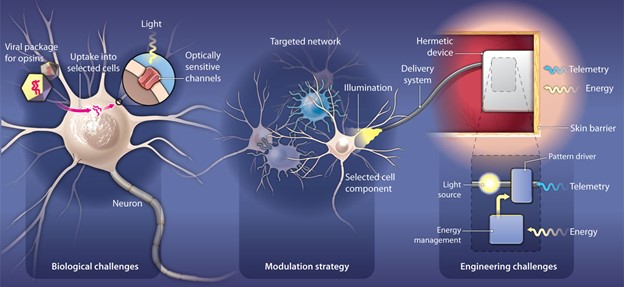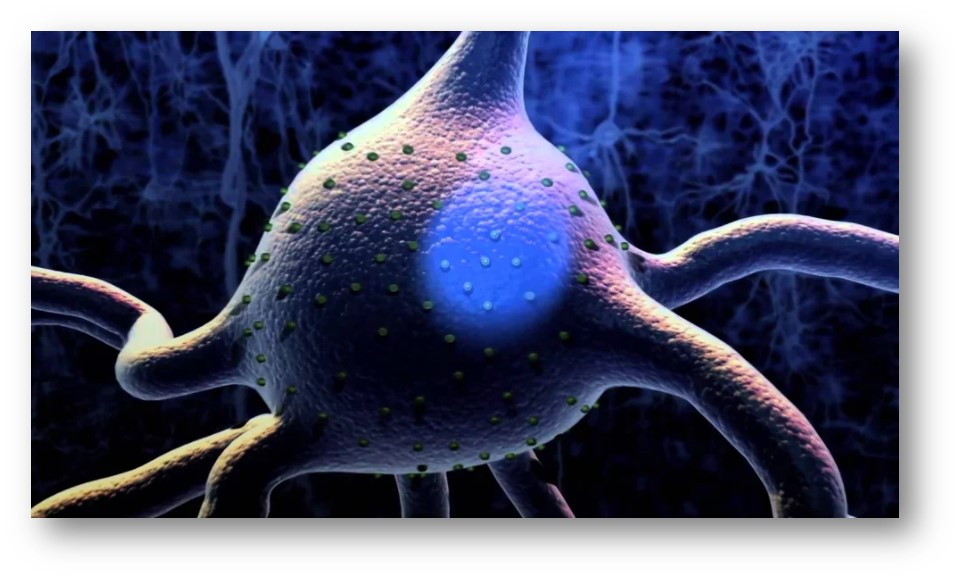Optogenetics is a rapidly evolving field of applied research that has the ability to precisely control and monitor the biological functions of a cell, group of cells, tissues, or organs with high temporal and spatial resolution by using the optical system and genetic engineering technologies. In recent years, optogenetics has gained much interest. This biological technique uses a combination of light and genetic engineering to control the activities of cells in the brain. It is the process of changing the information in the genetic code of a living thing by adding or deleting information.
The term “optogenetics” was first introduced in 2006 and it refers to an approach that involves genetic engineering and optical technology to monitor biological functions of cells, tissues, organs or organisms, modified to express photosensitive proteins. The photosensitive proteins are optical sensors that provide a fluorescent readout for changes in biological activities. Optogenetics uses light to modulate molecular events in a targeted manner in living cells or organisms. It relies on the use of genetically encoded proteins that change conformation in the presence of light to alter cell behaviour.
How Does Optogenetics Work?
Despite the enormous efforts of researchers, our limited insight into psychiatric disease hinders the search for cures and contributes to stigmatization. Clearly, we need new answers in psychiatry. Some microorganisms produce proteins that regulate the flow of electric charge across cell membranes in response to visible light. These proteins produced by opsin genes help extract energy and information from the light in the microbes' environments. Optogenetics involves the insertion of genes into cells that confer light responsiveness for assessing specific readouts, or effects, of this optical control. Genetically modified cells are stimulated by light to influence cellular behaviours. The target cells are engineered in such a way that they express exogenous photosensitive proteins that alter membrane potential, or other cellular properties, in response to illumination. The light-sensitive proteins used in optogenetic experiments are channelrhodopsin and halorhodopsin. Microbial opsins capture light energy and use it to either actively pump ions across the cell membrane or to open channels allowing a passive flow of ions across the cell membrane. Microbial opsins offer high-speed neural activation and silencing without requiring the use of chemicals in the mammalian brain.

Despite all the exciting possibilities, optogenetics may give rise to ethical dilemmas. However, stringent measures should be applied to ensure that such applications are approached ethically. Scientists are investigating ways to treat a wide variety the diseases. Optogenetics could provide alternatives to the currently prevalent treatment procedure called deep brain stimulation. Optogenetics is a revolutionary technology. It allows researchers to control the activity of targeted brain cells which could lead to the better and more efficient treatment of a broad range of neurological disorders including blindness, autism, Parkinson’s disease, epilepsy, schizophrenia, depression, obsessive compulsive disorder (OCD). Currently, no major side effects have been discovered related to optogenetics.
Optogenetics is a budding field of research that has unlocked a whole new world for brain research. This method provides insights into neurological and psychiatric diseases including anxiety, depression, obsessive-compulsive disorder, social dysfunction, and drug addiction. It is relatively a new concept, but it has yet to reach its full potential. Thus, researchers have developed a new generation technique to control individual neurons in the brain, paving a new road towards curing brain disorders.

